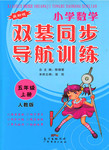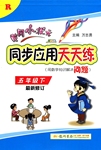题目内容
信息匹配
根据短文内容,从短文后的选项中选出能填入空白处的最佳选项。选项中有两项为多余选项。
When your pet is sick, you know it needs medication.But pets, like babies, don't know the pill you want them to take will help them. 1 Here are some tips to help get your pet to take liquid medicine.
2 If the answer is yes, then your easiest path is to mix it with canned food.First give your hungry pet a small amount of canned food without the medication.It's important that the pet nibbles(一点一点地吃)at the food and sees that there's nothing wrong.
Next, while the pet is still hungry, mix the medication in a small amount food and present it.Repeat as necessary to get the entire dose(剂量)down. 3 If the pet decides not to finish the meal, the dose will be wasted.
If the chemist says the medication cannot be taken with food, you need a syringe(注射器)or a dropper(滴管)to get the liquid down your pet's throat.
4 Keep a cheerful tone in your voice so the pet doesn't sense your stress or hesitation.Position your pet where it cannot run away, perhaps having a dog sit with his back against a wall or chair-or a cat on your lap.
5 Use your other hand to insert the syringe or dropper between the cheek and back teeth.Slowly squeeze the medication so the pet won't choke.Try to keep your pet's mouth closed for approximately 30 seconds until you see it has swallowed.If your pet is being obstinate(倔强的), stroke(抚摸)its throat gently or blow on the face.
Be sure you end the session with praise and perhaps a treat so your pet will not associate medication with a bad experience.
A.Before you call your pet in, be sure to have the medication and any other materials you’ll need ready.
B.Once the pet is in position, use one hand to gently open the pet's mouth from above, tilting back the head slightly.
C.Ask the vet if the liquid medication can be given with food.
D.You should know the reason why the pet refuses to take medicine.
E.Never mix the medication with the full meal.
F.They just know it smells funny and they don't want it.
G.Don't force your pet to swallow all the medicine.
解析:
F C E A B

 双基同步导航训练系列答案
双基同步导航训练系列答案 黄冈小状元同步计算天天练系列答案
黄冈小状元同步计算天天练系列答案| 信息匹配 根据短文内容,从下框的A-F选项中选出能概括每一段主题的最佳选项。选项中有一项为 多余项。 | |
Auctions are public sales of goods, conducted by an officially approved auctioneer. He asks the crowd assembled in the auction-room to make offers, or "bids", for the various items on sale. He encourages buyers to bid higher figures,and finally names the highest bidder as the buyer of the good. This is called "knocking down" the goods, for the bidding ends when the auctioneer strikes a small hammer on a table at which he stands. 2._____ The ancient Roman probably invented sales by auction, and the English word comes from the Latin auction, meaning "increase". The Romans usually sold in this way the goods taken in war. In England in the eighteenth and nineteenth centuries, goods were often sold "by the candle", a short candle was lit by the auctioneer, and bids could be made while it stayed alight. 3._____ Practically all goods whose qualities vary are sold by auction. Among these are coffee skins, wool, tea, furs, silk and wines. Auction sales are also usual for land and property. Furniture pictures, rare books, old china and similar works of art. 4. _____ An auction is usually advertised beforehand with full particulars often articles to be sold and where and when they can be viewed by potential buyers. If the advertisement cannot give full details, catalogues are printed, and each group of goods to be sold together called a "lot" is usually given a number. The auctioneer need not begin with LOT I and continue in the order of numbers, he may wait until he notices the fact that certain buyers are in the room and then produce the lots they are likely to be interested in. 5._____ The auctioneer's services are paid for in the form of a percentage of the price the goods are sold for. The auctioneer therefore has a direct interest in pushing up the bidding as high as possible. He will not waste time by starting the bidding too low. He will also play on the opponents among his buyers and succeed in getting a high price by encouraging two business competitors to bid against each other. |
| 信息匹配 根据短文内容,从下框的A-F选项中选出能概括每一段主题的最佳选项。 选项中有一项为多余项
Auctions are public sales of goods, conducted by an officially approved auctioneer. He asks the crowd assembled in the auction-room to make offers, or "bids", for the various items on sale. He encourages buyers to bid higher figures,and finally names the highest bidder as the buyer of the good. This is called "knocking down" the goods, for the bidding ends when the auctioneer strikes a small hammer on a table at which he stands. 2._____ The ancient Roman probably invented sales by auction, and the English word comes from the Latin auction, meaning "increase". The Romans usually sold in this way the goods taken in war. In England in the eighteenth and nineteenth centuries, goods were often sold "by the candle", a short candle was lit by the auctioneer, and bids could be made while it stayed alight. 3._____ Practically all goods whose qualities vary are sold by auction. Among these are coffee skins, wool, tea, furs, silk and wines. Auction sales are also usual for land and property. Furniture pictures, rare books, old china and similar works of art. 4. _____ An auction is usually advertised beforehand with full particulars often articles to be sold and where and when they can be viewed by potential buyers. If the advertisement cannot give full details, catalogues are printed, and each group of goods to be sold together called a "lot" is usually given a number. The auctioneer need not begin with LOT I and continue in the order of numbers, he may wait until he notices the fact that certain buyers are in the room and then produce the lots they are likely to be interested in. 5._____ The auctioneer's services are paid for in the form of a percentage of the price the goods are sold for. The auctioneer therefore has a direct interest in pushing up the bidding as high as possible. He will not waste time by starting the bidding too low. He will also play on the opponents among his buyers and succeed in getting a high price by encouraging two business competitors to bid against each other. |